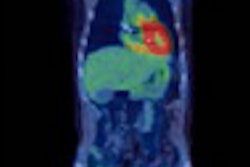The European Society of Cardiology (ESC) has published new guidelines for the diagnosis and treatment of acute and chronic heart failure.
Published in the European Heart Journal and the European Journal of Heart Failure, the guidelines were presented at Heart Failure 2016 and the 3rd World Congress on Acute Heart Failure.
The guidelines for the first time include LCZ696, a drug that is first in the class of angiotensin receptor neprilysin inhibitors (ARNIs) and is designed to reduce the risk of death and hospitalization in patients with heart failure with reduced ejection fraction.
Also, a new category of heart failure with midrange ejection fraction has been added for patients with a left ventricular ejection fraction ranging from 40% to 49%. It sits between heart failure with reduced ejection fraction, defined as left ventricular ejection fraction less than 40%, and heart failure with preserved ejection fraction, defined as left ventricular ejection fraction above 50%.
Cardiac resynchronization therapy is now contraindicated in patients with a QRS duration less than 130 msec after the EchoCRT study found it may increase mortality in this group. This is a change from the 120 msec cutoff in the 2012 guidelines. The indications for cardiac resynchronization therapy vary according to the presence or absence of left bundle branch block and QRS duration.
The concept of "time is muscle" in acute heart failure, adopted from acute coronary syndrome, is included in the guidelines for the first time as well. In addition, a new algorithm was introduced for the diagnosis of heart failure in the nonacute setting and is based on the evaluation of heart failure probability.
Adaptive servoventilation is not recommended in patients with heart failure with reduced ejection fraction and central sleep apnea after mortality increased in the SERVE-HF trial.
Lastly, novel recommendations to prevent or delay the onset of heart failure and prolong life include the treatment of hypertension, statins for patients with or at high risk of coronary artery disease, and empagliflozin (a sodium-glucose cotransporter 2, or SGLT2, inhibitor) for patients with type 2 diabetes.



















